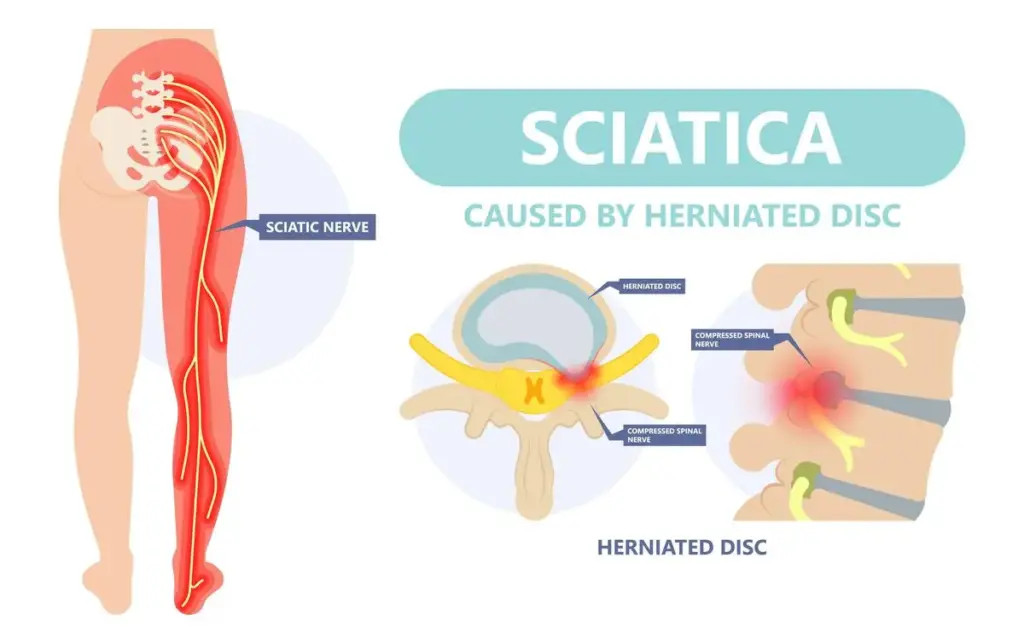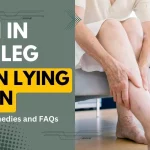The sciatic nerve travels from the lower back down the buttocks and into the legs, and sciatica is characterized by pain that radiates along its course. Sciatica can cause mild to severe discomfort; symptoms like numbness, tingling and muscular weakness are frequently accompanied by it. This article will explore how to relieve sciatica pain in leg, understanding its causes and how they affect daily living.
Understanding sciatica

The first step in receiving the right care is realizing sciatica symptoms. Sharp, shooting pain in the leg, a burning sensation or trouble standing or walking are typical symptoms. Speak with a healthcare provider to confirm the diagnosis and rule out any underlying diseases that can mimic sciatica. To pinpoint the cause of the discomfort, diagnostic testing like electromyography (EMG) or magnetic resonance imaging (MRI) may be suggested.
Recognizing the Primary Causes of Sciatica
Sciatic nerve discomfort can result from several disorders. For instance, herniated discs develop when the soft interior of a spinal disc bulges outward and presses against the nerve roots, inflicting pain and irritation. Conversely, spinal stenosis entails narrowing the spinal canal, frequently brought on by ageing-related changes, bone spurs or ruptured discs. The deep buttocks muscle, known as the piriformis, can spasm and irritate the sciatic nerve, which is another possible explanation.
Changes in Lifestyle for Sciatica Relief
Changing certain aspects of your lifestyle can aid with sciatica pain relief. Keeping a decent posture is important because it might worsen the condition. Ergonomics is crucial at work and home in preventing sciatic nerve discomfort. Back pain can significantly decrease by properly adopting supportive seats and setting up workstations. Regular exercise, such as walking or swimming, can help manage pain by increasing the affected area’s flexibility and muscle strength.
Exercises to Stretch and Strengthen for Sciatica Relief

Stretches that target the sciatic nerve can ease discomfort and encourage recovery. These stretches frequently involve soft movements that stretch the legs, buttocks and lower back. Strengthening activities that help the spine and relieve nerve pressure are also advantageous. Stretching abilities, blood flow and general well-being, can all be improved by incorporating exercises like yoga and Pilates into a sciatica therapy routine.
Sciatica Pain Management Techniques
Over-the-counter painkillers can be used to relieve the agony brought on by sciatica temporarily. Both heat and cold therapies have calming effects. Cold therapy can reduce inflammation, while tense muscles can be relaxed by applying heat to the affected area. W topical lotions and ointments with menthol or capsaicin might provide localized relief by desensitizing the nerves.
Alternative Methods of Treatment for Sciatica
By treating spinal misalignments, alternative therapies like chiropractic treatment and spinal adjustments help to reduce the discomfort associated with sciatica. Thin needles are inserted into certain body spots during acupuncture as a supplemental therapy option to promote healing and relieve pain. By enhancing blood circulation and reducing muscular tension, massage treatment, which is well known for its benefits in relieving stress and reducing pain, can also successfully manage sciatica symptoms.
Invasive procedures to treat sciatica
More invasive procedures can be required in cases of extreme sciatica pain. A typical treatment option for pain relief and inflammation reduction is an epidural steroid injection, which involves injecting corticosteroids into the epidural space. However, it’s crucial to weigh the advantages and disadvantages of this operation. Surgery is frequently only used for severe or persistent episodes of sciatica, and it seeks to eliminate the cause of the sciatic nerve’s compression or correct any underlying structural issues.
Lifestyle Changes to Prevent Recurrence of Sciatica
Implementing lifestyle changes is necessary to stop sciatica from returning. It’s crucial to maintain a healthy weight because carrying more pounds might put additional strain on the nerves. Proper lifting techniques should be used to avoid injuries that cause sciatic nerve discomfort. Regular stretching and core-strengthening exercises can improve spine support and lower the likelihood of recurrent episodes. Back-strengthening exercises can also be included in daily routines.
Psychological assistance and coping mechanisms
One’s emotional health may suffer from ongoing sciatica pain. Finding an outlet for sharing experiences and developing empathy can be found by asking for help from family and friends or joining support groups. Deep breathing exercises and meditation are mindfulness and relaxation strategies that can help manage stress and boost mental health. Investigating other coping mechanisms, such as taking up a hobby or finding creative outlets, can help people shift their attention away from pain and promote a positive outlook.
Potential Consequences of Untreated Sciatica
Sciatica treatment is important to avoid long-term consequences. If the sciatic nerve continues to be compressed by the underlying cause of sciatica, such as a herniated disc or spinal stenosis, nerve damage may result. In the affected area, this may result in conditions that cause persistent discomfort. Sciatica can substantially negatively impact the overall quality of life if it is not treated, reducing movement and making daily tasks more difficult.
Finally, sciatica can considerably impact a person’s daily life by producing pain, numbness and decreased movement. Understanding the causes, getting the right diagnosis and making lifestyle changes can help those with sciatica pain. Pain can also be reduced by stretching, employing pain-management strategies and investigating alternative remedies. To effectively handle a situation and proactively improve one’s health and well-being, it is imperative to consult with healthcare professionals. Remember that relief is attainable and that you are not alone in your quest to live a life free of sciatica pain.
It’s important for you: Best Mattress for Lower Back and Leg Pain
Answers to Frequently Asked Questions
Is physical activity helpful for easing sciatica pain?
Regular exercise can help relieve sciatica pain by enhancing blood flow, muscle flexibility and strength in the affected area. It is crucial to get the advice of a healthcare practitioner to identify the workouts best suited to each person’s unique situation.
When does sciatica often go away?
The severity of sciatica can last for a variety of times, depending on its underlying cause and personal circumstances. While some people might feel better within a few weeks or months, others might endure chronic symptoms longer. The duration of sciatica can be shortened and managed by seeking the right medical advice.
Can sciatica be entirely cured?
Instead of attempting a full recovery, sciatica treatment aims to manage symptoms and address the underlying problem. But many people find great relief and reduced symptoms with the right therapy and lifestyle changes.
Exist any all-natural cures for sciatica?
Acupuncture, herbal supplements and essential oils are natural treatments and complementary therapies that can help with sciatica pain. To ensure the safety and efficacy of natural medicines, it is crucial to get medical advice before using them.
When is surgery advised for the treatment of sciatica?
When non-surgical options are exhausted or if a serious underlying problem, like a severely herniated disc or spinal stenosis, is the cause of sciatica, surgery is frequently considered. A healthcare practitioner will thoroughly examine each case to decide whether surgery is appropriate.



